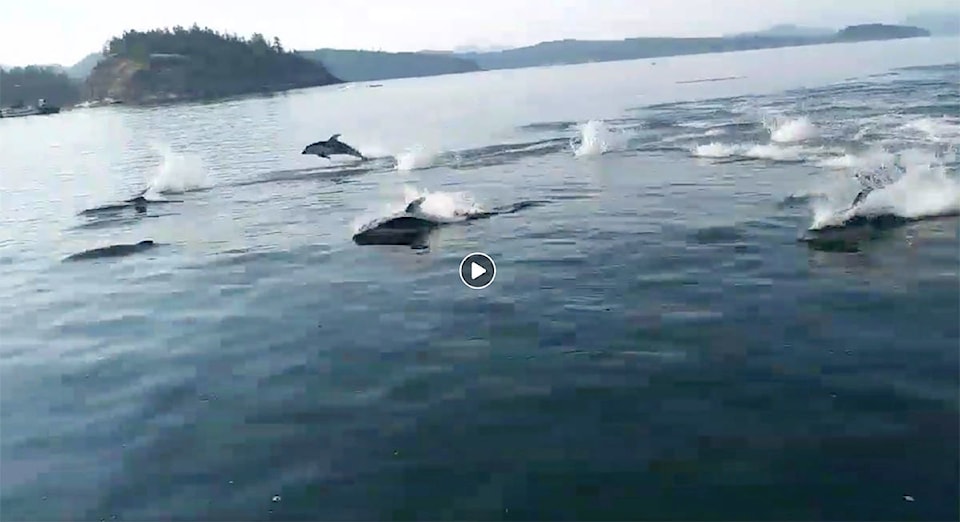Aldis William Hart spent roughly 40 years on the sea working on boats and he’d seen a lot.
Now retired, the Quadra Island resident was among those last week who witnessed something unusual for the area – something indeed new to his eyes.
He was in dock at Heriot Bay on May 27 when he saw a large pod of dolphins swimming frantically in the waters of the bay. Some estimates on social media have put the number at 35 to 40 of the marine mammals, but Hart thinks there might have even been as many as 60.
“I’ve seen pods of dolphins,” he told the Mirror. “I’ve never seen anything like this.”
If the estimates differ, it might be because the scene was confusing. The dolphins were in Heriot Bay for several hours, agitated about something that soon became clear. They were being pursued by a small pod of orcas, who had been able to kill at least one of the dolphins.
“I saw a big male jump right out of the water and flip one of the dolphins with its tail,” Hart said.
He decided to film the interaction, with the orcas tiring out the dolphins, who were stuck in the shallow area of Heriot Bay close to the dock. The dorsal fins of the orcas looming further out in the waters were visible to people on shore. Meanwhile, the dolphins continued to swim frantically.
“They were highly energetic, and they couldn’t get out of the bay because the whales were patrolling the entrance,” Hart says.
Finally, the dolphins, getting exhausted from the pursuit, broke into smaller groups in an attempt to escape.
“They made the decision to leave the bay,” he said.
RELATED STORY: VIDEO: Seal escapes hungry orcas by climbing aboard tourist boat
The predators were identified as Bigg’s orcas. These are described as transient orcas, which differ from resident orcas by, among other things, a different dorsal fin, a tendency to travel in smaller pods and a diet consisting primarily of marine mammals as opposed to fish.
“Research suggests that Bigg’s killer whales have been genetically separated from all other killer whales for about 750,000 years,” the Fisheries and Oceans Canada website states.



